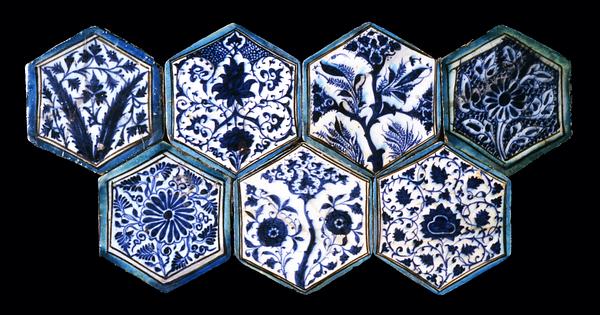Seven fritware tiles, painted in blue and turquoise under a transparent glaze
Syria; 15th century
Diam: (each tile) c. 20 cm
The tiles’ blue vegetal ornamentation on a white background was influenced by Chinese porcelain imported in large quantities to the Middle East in the 15th century. In contrast to their Chinese models, however, the execution is freer, the plants are sometimes local, and the blue pigment had a tendency to run in the colorless glaze.
Hexagonal tiles of this kind, each framed, were typical of work from 15th-century Syria and Egypt, where many are still found on the buildings for which they were made. In keeping with the orientation of the motif, hexagonal tiles like these could also be placed with a straight side at the bottom and combined with triangular turquoise tiles.
Inv. no. D 48-52/1986 & D 54-55/1986
Published in:
Art from the World of Islam. 8th-18th century, Louisiana, Humlebæk 1987, cat.no. 146;
Kjeld von Folsach: Islamic art. The David Collection, Copenhagen 1990, cat.no.141;
Kjeld von Folsach, Torben Lundbæk and Peder Mortensen (eds.): Sultan, Shah and Great Mughal: the history and culture of the Islamic world, The National Museum, Copenhagen 1996, cat.no. 129;
Kjeld von Folsach: Art from the World of Islam in The David Collection, Copenhagen 2001, cat.no. 203;
